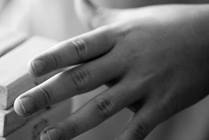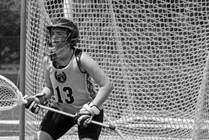Search Results
Viewing: 551-560 of 1459 | All
Respiratory Distress Syndrome: Newborn
Respiratory distress syndrome, also known as RDS, is caused by not having enough surfactant in the lungs. It is the most common lung disease in premature infants and it occurs because the baby’s lungs are not fully developed. Babies with RDS need extra oxygen and surfactant as well as medicine.
Article
Vagus Nerve Stimulation (VNS)
The Vagus Nerve Stimulator treats epilepsy that is not controlled with medicine. The VNS prevents or lessens the frequency of seizures by sending mild electrical impulses through the vagus nerve to the brain.

Condition
Headaches in Children
Headaches are common in children and teens. There are many types of headaches. Each type has their own treatment.
Article
Hip Subluxation, Dislocation and Surveillance in Children with Cerebral Palsy (CP)
Children with cerebral palsy (CP) are at risk for hip subluxation and dislocation. Hip subluxation and dislocation occur when the hip joint is out of position.

Condition
Chylothorax
When lymphatic fluid (or lymph) collects around the chest wall and lungs, it can cause chest pain or make it hard to breathe. This condition is called chylothorax.
Article
Antroduodenal Manometry
An antroduodenal manometry records the pressure waves that are produced in the stomach and small intestine.

Condition
Snapping Hip Syndrome
Snapping hip syndrome is a condition in which you may sense something catching or hear a popping sound or click in your hip when your hip joint moves. If you put your hand over the hip area, you might feel or even see the snap happen when walking, running, bending or getting up from a sitting position.

Condition
Acute Pancreatitis
This Helping Hand™ explains the signs, causes, and treatments for acute pancreatitis—a sudden inflammation of the pancreas—with expert guidance from the care team at Nationwide Children’s Hospital.
Article
Hippotherapy
Hippotherapy gets its name from the Greek word ‘‘hippos,’’ meaning horse. Horses are used as a tool in physical, occupational, and speech therapy. How It Works The horse is a base that supports your child.
